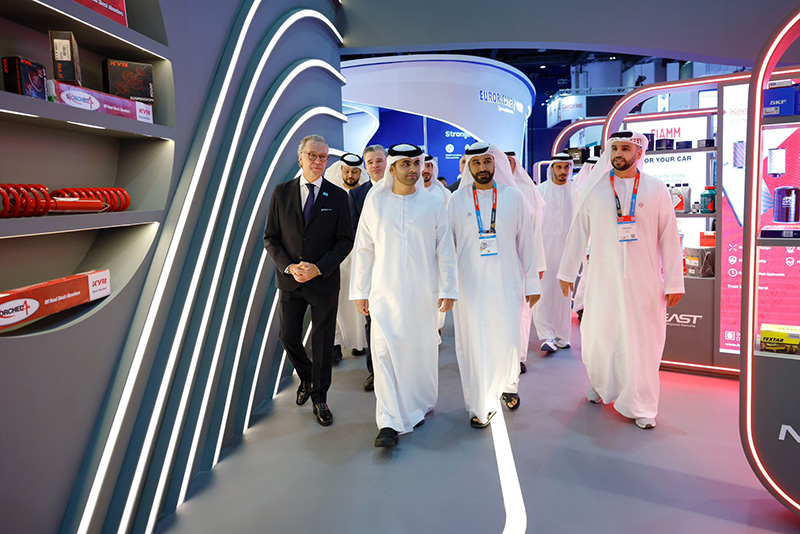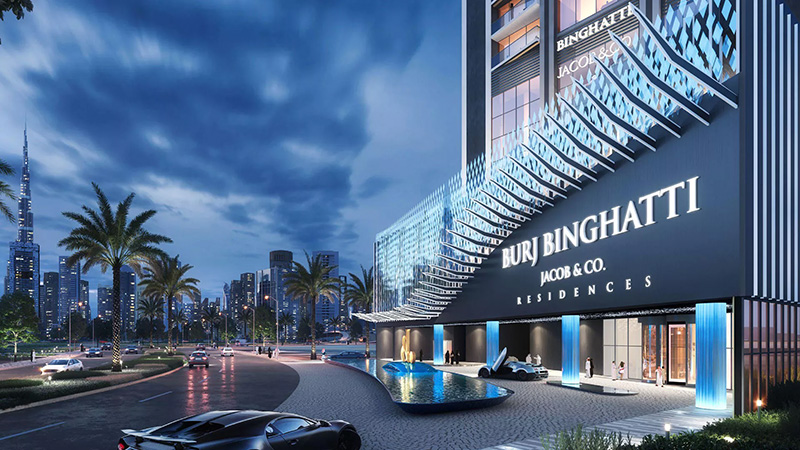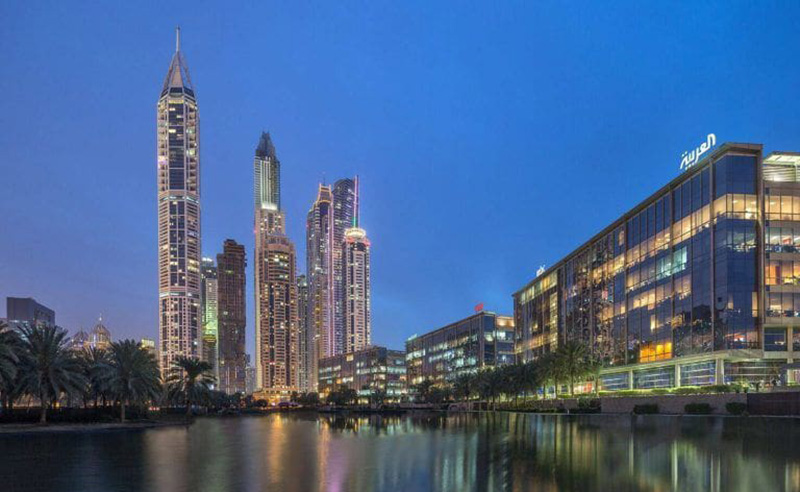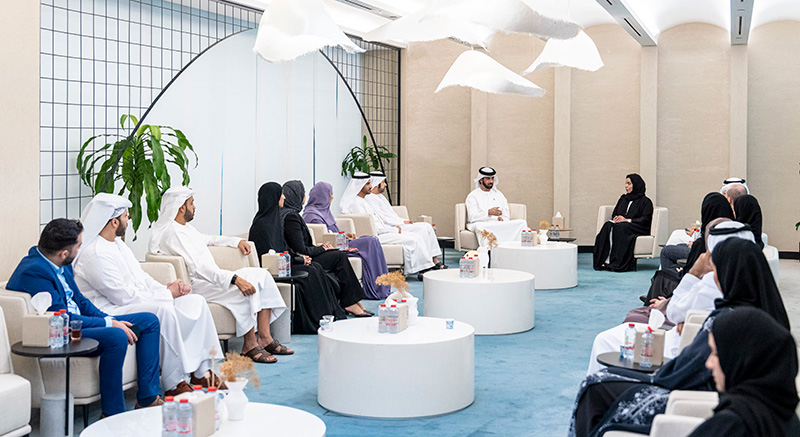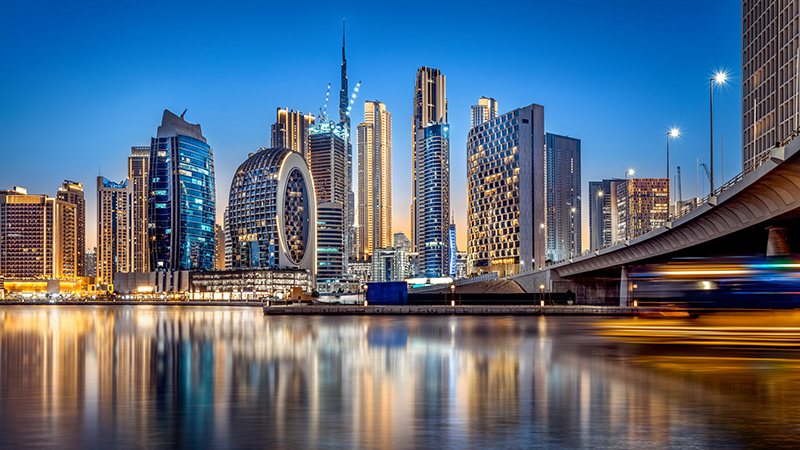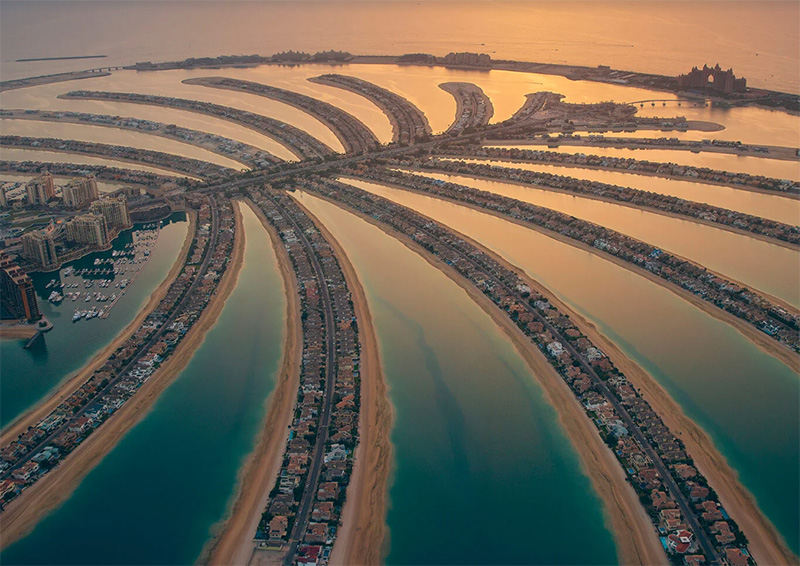
“Life has taught us, and we have, in turn, taught life that the impossible is only a point of view. In the quest for leadership, excellence recognizes no ceiling. With lucid vision, steadfast determination, and loyal people, dreams are compelled to become reality.”
H. H. Sheikh Mohammed bin Rashid Al Maktoum
The force of this credo does more than adorn speeches; it frames Palm Jumeirah itself. What began as an audacious engineering sketch matured into a shoreline certainty that redrew the cartography of the Arabian Gulf and the arithmetic of real-estate finance. By refusing to treat water as a barrier or scale as a deterrent, Dubai turned geography into a negotiable variable and projected a new philosophy of possibility across global markets. Palm Jumeirah is therefore less a monument of stone and sand than an empirical proof: disciplined ambition, guided by consistent leadership, can migrate the improbable from the realm of conjecture to the ledger of national assets, inviting scholars to rethink where the outer edge of urban imagination really lies.
From Vision to Blueprint
The idea of Palm Jumeirah germinated in the late 1990s, when Dubai set its sights on becoming both a world-class tourist destination and a diversified centre of commerce. At that stage the emirate possessed barely 40 kilometers of usable shoreline, an obvious constraint for leaders determined to raise annual arrivals from roughly five million visitors to fifteen million. Confronted with that geographic ceiling, His Highness Sheikh Mohammad bin Rashid Al Maktoum, then Crown Prince of Dubai, took pen to paper and outlined a palm-shaped island that would multiply beachfront real estate while meshing with a wider constellation of mega-projects: Mohammad Alabbar was stewarding the rise of Dubai Marina, and Sultan bin Sulayem would later oversee the island’s reclamation.
Mohammad Al Gergawi, present at those early strategy sessions, later observed that Sheikh Mohammad spoke as though the additional coast already existed: “He pictured the beaches before the dredgers reached the Gulf, he was living in the future that the rest of us now occupy”. The remark captures an ethos in which geography is treated less as a boundary than as a variable, ready to be reshaped by disciplined vision and coordinated execution. In that spirit, Palm Jumeirah advanced from sketch to seawall through a deliberate blueprint that fused engineering feasibility with economic calculation, ultimately redefining both the shoreline and the possibilities of modern Dubai.
Engineering, Governance, and Ecological Challenges
When Palm Jumeirah was unveiled to the public in 2001 it met a wall of engineering scepticism no one in the Gulf had attempted to build a palm-shaped city in open water, and rumours soon circulated that the island was sinking. Yet the project pressed ahead under the steadying patronage of Sheikh Mohammed bin Rashid Al Maktoum, then Crown Prince of Dubai. Mohammad Al Gergawi would later remark that “knowing a champion named Mohammad bin Rashid stood behind us quelled most fears,” capturing how political resolve became an informal risk-management instrument
Executing the vision demanded marine-dredging on a scale without local precedent. A joint venture led by Dutch specialist Van Oord alongside Belgian group Jan De Nul pumped some 94 million m³ of sand from offshore borrow pits and positioned 5.5 million m³ of quarried rock to create an eleven-and-a-half-kilometer crescent breakwater. The breakwater’s geometry was refined by consultants at Royal Haskoning to meet overtopping and stability thresholds, and at Sheikh Mohammad’s insistence engineers relied exclusively on natural aggregates, eschewing concrete foundations to preserve the Gulf’s marine character.
Environmental feedback loops emerged quickly. By enclosing the fronds, the continuous breakwater hindered tidal exchange and left inner lagoons prone to stagnation. Hydrodynamic modelling prompted designers to reopen selected channels, restoring circulation and reducing the risk of eutrophication.
Administratively, the island became a stress-test of Dubai’s capacity to run several mega-projects concurrently. Government developer Nakheel PJSC synchronized thousands of workers, scores of contractors and a multilayered financing architecture while external consultants, among them Halcrow and Atkins on later phases supplied design and project-management expertise. Site works began in mid-2001, and despite the post 9/11 shock to global tourism the first homeowners received keys by 2006, an accelerated timetable that underscored how political backing, private-sector contracting depth and agile procurement could converge to recode coastal geography.
Architectural and Community Fabric
Palm Jumeirah resolves into three interlocking parts. The trunk, reached from the mainland by a six-lane causeway, functions as the island’s commercial spine; from its central axis 17 fronds project, each lined with waterfront plots, beyond them lies a protective crescent that runs for about 11.5 kilometers and also serves as a leisure promenade. Villas on the fronds span roughly 4.000 to 35.000 square feet, marrying Arabesque cues to contemporary materials and giving every address a private strip of sand.
Hotel development followed at pace. By the close of 2009 twenty-eight resorts were operating on the crescent, led by Atlantis, The Palm, which opened in September 2008 after an estimated investment of about 1.5 billion US dollars. A second landmark, Atlantis The Royal, welcomed its first guests in February 2023, while Jumeirah Zabeel Saray began trading in January 2011. The island quickly became a global postcard: NASA astronauts have photographed its palm silhouette from the International Space Station, and travel media repeatedly cite it as a modern engineering marvel.
Infrastructure kept pace with real-estate ambition. Nakheel Mall opened on the trunk on 28 November 2019, providing a five-level retail core linked directly to The Palm Tower observation deck. Along the outer crescent, an 11 kilometer boardwalk offers uninterrupted views of both the Arabian Gulf and Dubai’s skyline. Since April 2009 the 5.4 kilometer Palm Monorail has moved residents and visitors between Gateway Station on the mainland and Atlantis Aquaventure, reducing road pressure on the causeway. By 2022 the island counted more than 25.000 permanent residents drawn from scores of nationalities, creating a cosmopolitan micro-city perched at the edge of Dubai.
Investment Cycles from Launch to 2025
The island’s initial build cost reached an estimated twelve billion US dollars, funded by the Government of Dubai and by off-plan villa sales that rapidly sold out. By 2007 seventy-five per cent of units were ready for hand-over.
Property prices soared until the 2008–2009 global financial crisis, when Dubai’s market corrected sharply. Nakheel restructured debt in 2010, and sister projects Palm Jebel Ali and Palm Deira were frozen. Yet Palm Jumeirah retained intrinsic appeal, its completed infrastructure sustaining occupancy.
Recovery from 2011 revived values. The pandemic era accelerated global appetite for ultra-prime homes, and in the first half of 2021 over half of Dubai transactions above ten million dollars occurred on the Palm. Average prices reached about 2,100 dirhams per square foot in 2021. October 2022 recorded Dubai’s then-highest residential sale when a villa sold for 302.5 million dirhams (about 82 dollars). In 2024 the island logged total sales of roughly nineteen billion dirhams across 1,529 deals, more than three and a half per cent of the emirate’s annual real-estate turnover.
Hotel capacity has expanded the city’s tourism engine, adding thousands of luxury rooms. Palm Jumeirah alone contributes markedly to Dubai’s visitor economy by pairing sandy beaches with aquatic parks, fine dining, and retail attractions.
Two decades after conception, Palm Jumeirah stands as evidence that long-range planning, bold vision, and disciplined execution can redraw urban geography. Yet stewardship remains critical. Environmental monitoring must track shoreline health and potential sea-level rise. Infrastructure will require periodic upgrades, for example an enhanced monorail-to-metro link to prevent congestion.
Continued global demand for high-end property indicates durable economic prospects. The island’s success even encouraged Dubai in 2023 to revive the larger Palm Jebel Ali, signalling confidence in the “city on the sea” model. Socially, Palm Jumeirah affirms Dubai’s image as an inclusive global hub; although elite in profile, the island welcomes the public to its beaches and promenades, thus enriching the wider community through recreation, employment, and services.
Palm Jumeirah therefore represents a milestone in Dubai’s modern history and a living laboratory for innovation and resilience. It began as a daring sketch under the maxim “nothing is impossible” and grew into a concrete rebuttal of that very word. As long as strategic vision aligns with prudent finance and collective will, similarly audacious projects will continue to define Dubai’s horizon.
